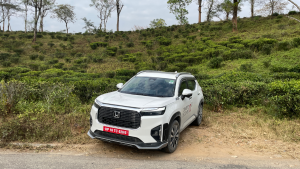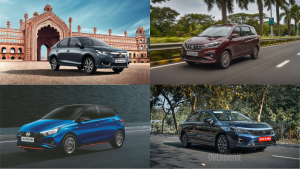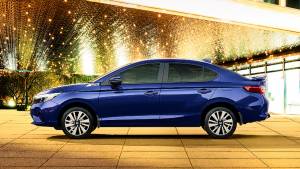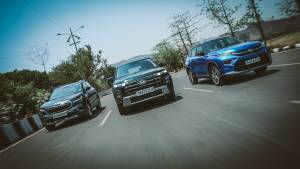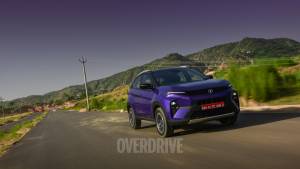2020 Honda City road test review
Maruti Suzuki is going to town talking about how diesel doesn't make economic sense at the moment, Skoda has repositioned the Rapid to offer a more tempting deal over hatchbacks and compact sedans, the Toyota Yaris is still chanting its 'I've got seven airbags' tune and Hyundai has given the ICOTY-winning Verna a significant makeover. All this action in the executive sedan space is in preparation to take on the new Honda City.
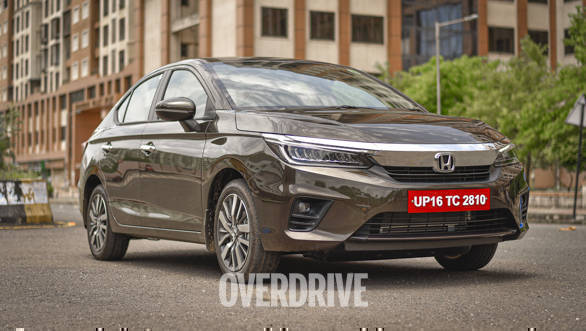
The City not only established Honda Cars in India, but it has also been the defining model line for the segment. In keeping with times and the ever-changing demands of the Indian market, the City has changed many shapes and sizes and while the consumer welcomed it all, the recent City was ridiculed for having lost some of the premium sheens that made the original so popular. But restoring the premium factor for the brand as a whole has been priority number one at the big H's headquarters and that is also one of the reasons why the Civic model line made a comeback to the Indian market.
Design
The City's look and feel, therefore, is all the more important this time around. The first step towards that is its claim of being the widest, longest and roomiest car in the segment. Putting numbers to it, the new City is 53mm wider, 109mm longer and 6mm lower, than the fourth-generation model that it will co-exist with. The design of the new City borrows heavily from the Honda Accord than the Civic, and that lends this car a relatively wide-bodied stance over a low-slung and sporty design akin to the Civic. The City's tail lights have often had an uncanny resemblance to BMW tail light designs and the new one follows in that tradition too. That also makes it the most premium tail light design in the category so far.
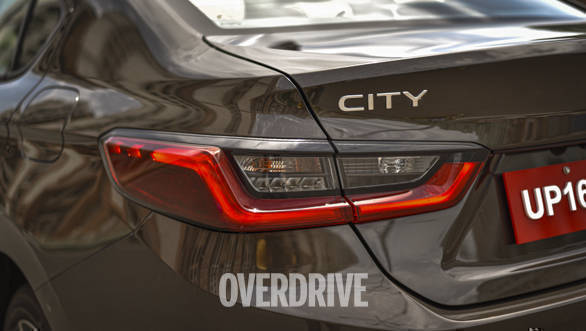
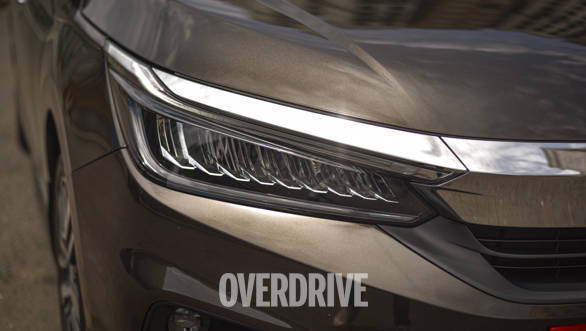
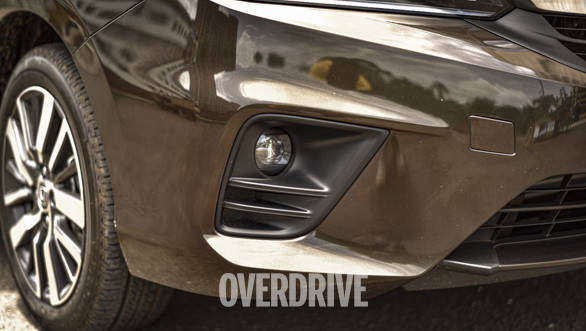
The headlights look more sophisticated in comparison with their 9-pot array of LED lamps each. Of course, this design may not look very unique anymore because we have seen it on almost every new Honda car and motorcycle. I believe that if the designers had their way, they would even put these headlamps on Honda's power generators and lawn-mowers! But it does look quite premium and having lived with a Civic for six months, I can tell you that this design element turns heads. The thick chrome grille that connects the headlights is a polarising design element though and I would have preferred a sleeker design. A sportier gloss black unit could be made available later as a part of an RS trim (currently sold in Thailand) that Honda is said to be evaluating for the Indian market with a 1.0-litre turbo-petrol engine.
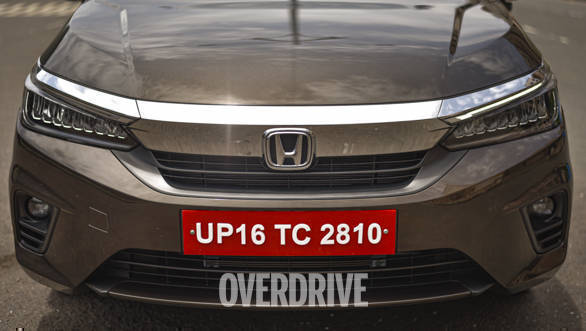
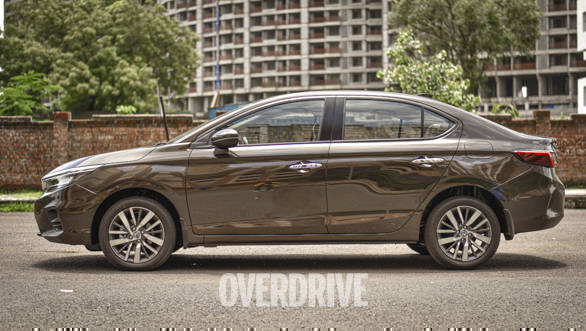
While the face looks distinctive, the defining angle for the new Honda City is the side profile, which shows off the car's increased proportions. Honda's designer says that the design of the new City is inspired by car drawings made by six-year-olds, and probably that explains the overtly long overhangs. Honda claims that despite the ground clearance being same as the fourth-generation City, the approach and departure angles are unchanged. But we ran a couple of ramp tests with both generations in a parking lot and the new one scraped its chin even at crawling speeds (Watch video review embedded below). Welcome to premium car tantrums.
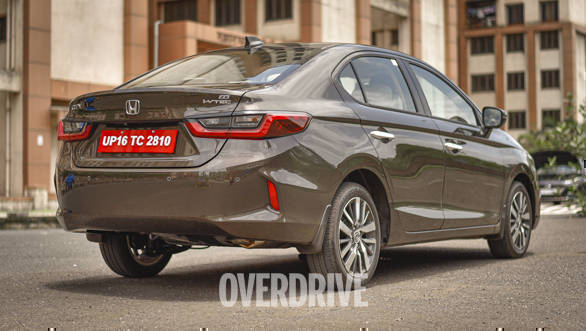
The bigger design inspiration for the new City comes from the Japanese Katana sword ? which arcs a seamless crease from the headlights to the tail lights. It also gives the City a broader and longer nose, that has allowed a proportionately long boot as well, which encloses 506 litres of cargo space.
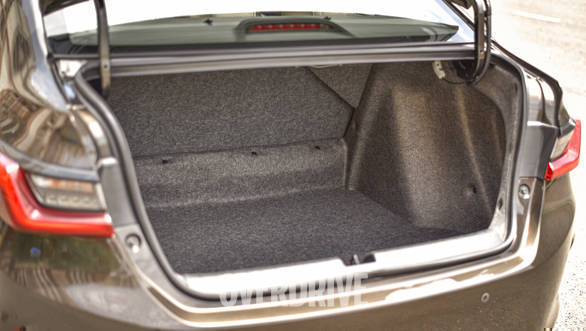
Cabin
While the dimensions have increased over the last generation City, the wheelbase remains unchanged at 2,600mm. Space was never a concern for the City, but by increasing the tread, Honda has improved on the shoulder space, while more knee room and foot space at the rear has been achieved by making the front seats slimmer like they did with the Amaze. But they have also made the cushioning three times thicker, and a little bit firmer too. The top trims drape the seats in faux leather which feels good to the touch, while the new contouring and bolstering gives the occupants a snug yet comfortable fit. Ingress and egress have no noticeable change.
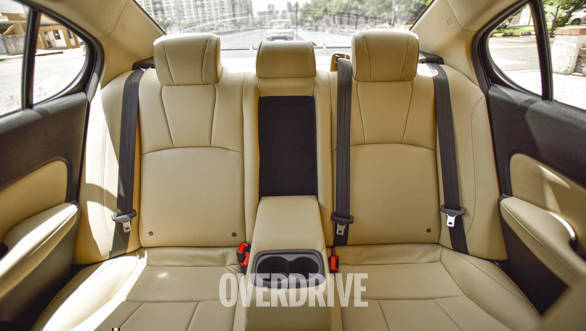
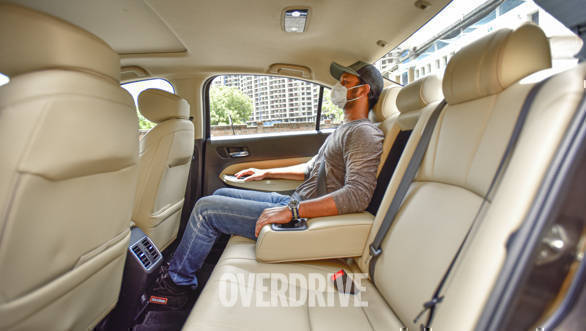 The City's cabin is roomier than before, but a panoramic glass roof would have nailed it! The angle of the rear backrest seems comfortable for long-distance journeys
The City's cabin is roomier than before, but a panoramic glass roof would have nailed it! The angle of the rear backrest seems comfortable for long-distance journeys
The City had started feeling plasticky and some materials felt low-rent compared to the competition, but the new one fixes that by leaps and bounds. The dashboard design is new and the fit and finish is excellent. There is faux-wood trim which manages to look pleasing, the stitches on the dashboard are real and Honda has added soft-touch materials on common touchpoints, which enhances the premium feel. I also like the knurled finish for the HVAC knobs, which are backlit and have reassuring clicks that complement the tactile feel of the rest of the switchgear and the new roll-and-click switches on the steering.
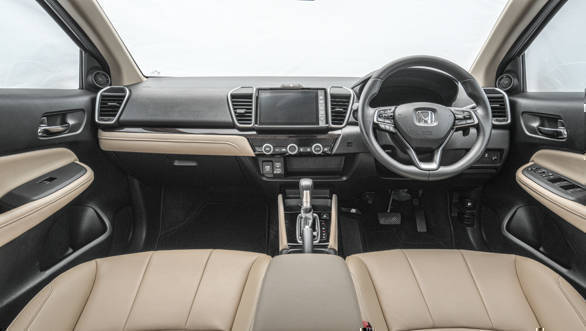
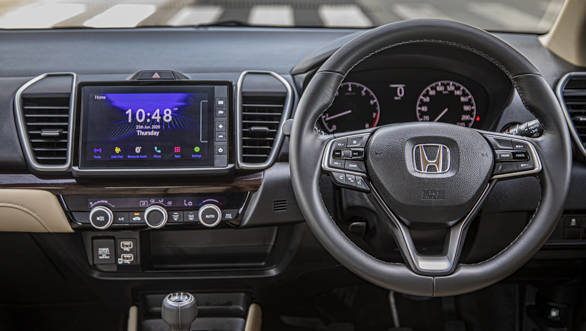
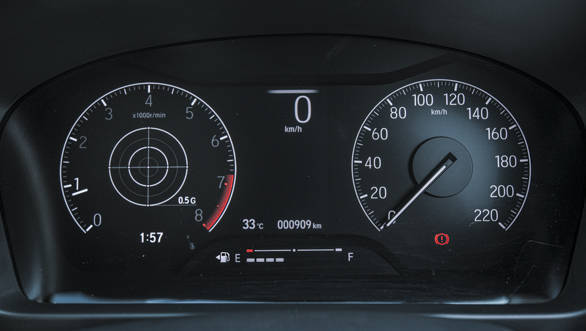
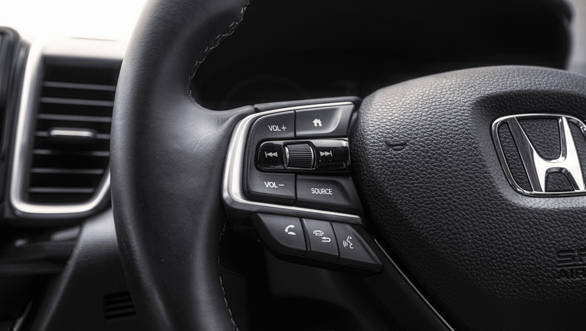
Taking prominence on the dash is an 8-inch touchscreen infotainment system, which, apart from satellite navigation, Apple CarPlay and Android Auto, also gets WebLink connectivity and connected tech. But unlike some of its rivals there is not a hint of the connected features or even the (Idea) network status on the infotainment screen ? all those features are controlled through the revised Honda Connect app on our phones. All the Jap brands seriously need to work on better user interfaces for these kinds of systems and the City is yet another example of that.
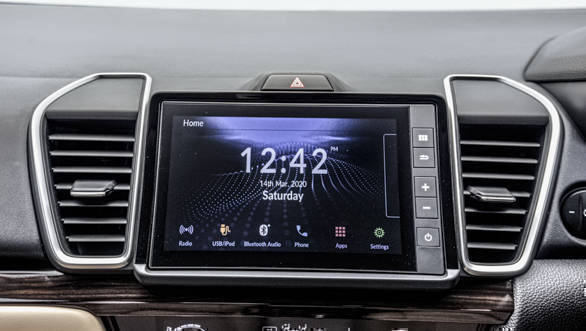
The phone app is an enhanced version of the one used by the current range of Honda cars and allows all the connected features you expect in 2020 ? geofencing, vehicle tracking, service alerts, payment gateway, vehicle theft notification, remote immobilisation, emergency service, crash notifications etc. On the automatic variant, you can also use the app or the car's key (in close proximity) to remotely start the car for up to 10 minutes to pre-cool the cabin. But the party piece is the Alexa remote capability. Not to be confused with Alexa Auto, the Alexa remote essentially is a new capability for your preferred Alexa device to communicate with the car. So you can simply ask Alexa to track the car, check fuel status, remind you about the next service or PUC certification expiry etc. It is, however, a one way communication, meaning you can't ask the car's infotainment to communicate with the Echo at home and ask it to brew a cappuccino on your fancy Alexa-enabled coffee-maker in time for your arrival. But it's a nice feature to have and opens new doors and possibilities.
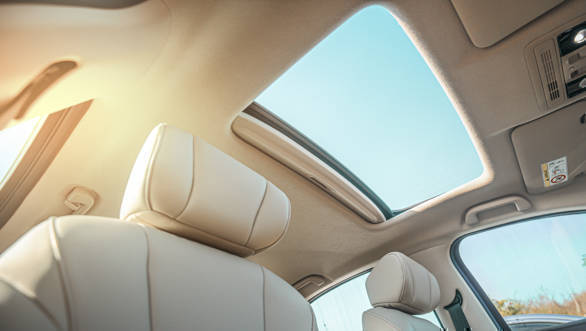
Along with the wheelbase, Honda has also retained the suspension mounting points of the previous-gen City, but the chassis has been revised with newer material ratios for enhanced rigidity. They have also used new bonding and insulation techniques to make the cabin quieter. While that has noticeably reduced all mechanical noises filtering into the cabin, there is a fair bit of booming sound on the concrete surface and wind noise coming off the wing mirrors beyond 80kmph. The wing mirrors have been repositioned to sit closer to the driver and create a larger ridge between themselves and the new, slimmer A-pillars. The window sills have been placed lower too, creating a combination that makes for better cornering visibility. The left wing-mirror is also equipped with the blind-spot assistant camera from the Civic ? a segment-first. While the blind-spot and reversing cameras are a good safety feature to have, their feed is noticeably pixelated on the relatively low-res infotainment screen (800x480p, WVGA).
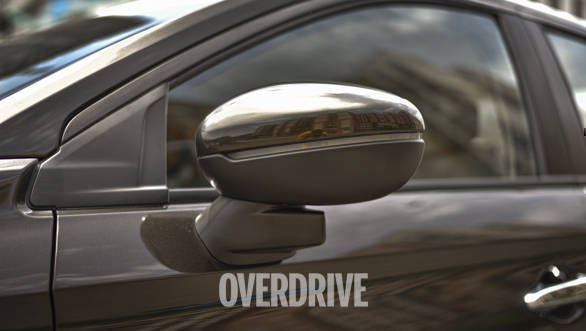
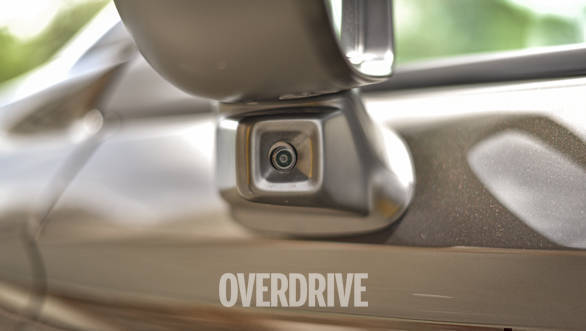
Safety
Safety has been taken rather seriously with the new City. You can choose up to six airbags, ABS, EBD, Traction Control, vehicle stability control, hill start assist ? all of which have helped the new City in earning a 5-star ASEAN NCAP rating. To that effect, Honda has added a 3-point seatbelt for each rear seat occupant, there is a tyre pressure monitoring and deflation warning system, and the auto headlamps will turn on even in the rains irrespective of how dark or bright the surroundings are. The car won't automatically turn on the hazard lights in the rain though, because the City knows it is the wrong thing to do. Be like the Honda City and don't be an idiot! In case of an accident or a mechanical malfunction, the aforementioned Honda Connect will also automatically contact emergency services and share the GPS coordinates for the car.
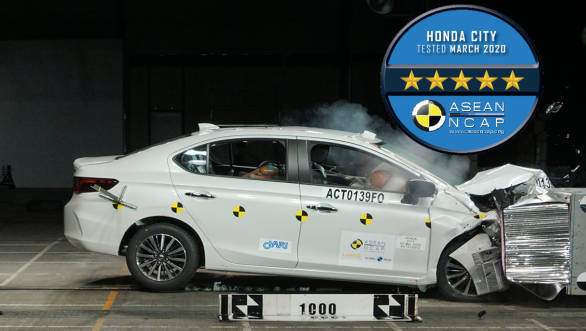
Powertrain performance and driving dynamics
The City's petrol option uses a 1.5-litre naturally aspirated i-VTEC 4-cylinder engine. While its output is similar to the outgoing car, it is an all-new engine that finally gets a double-overhead-cam (DOHC) and valve timing control. The internals boast of revised materials, more efficient geometries and cleaner combustion than its SOHC counterpart. While the latter was well-known for its refinement and rev-happy nature, the new one improves further on those aspects.
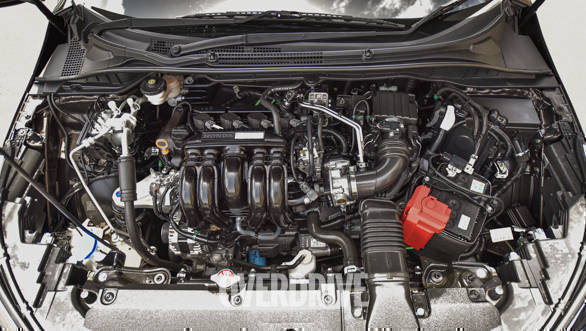
The manual transmission on this engine is an all-new 6-speed unit that replaces the previous 5-speed transmission. It's got a lighter clutch pedal feel, the throws are nice and short (though not as short as the Civic) and have the typical slick operation that we love in Japanese cars. The 7-step CVT is the convenient option and works discreetly at city speeds. The modified CVT 'box is quicker than before to respond to throttle and brake inputs so pulling overtakes doesn't require much planning either. But after the manoeuvre, it keeps revving for quite some time before shifting to the next ratio. We often call this the 'rubber-band effect,' and while it is still pronounced at highway speeds, it isn't so evident in the city. After all, the city environment is ideally what you are choosing the convenience of the automatic for over the charm of the manual.
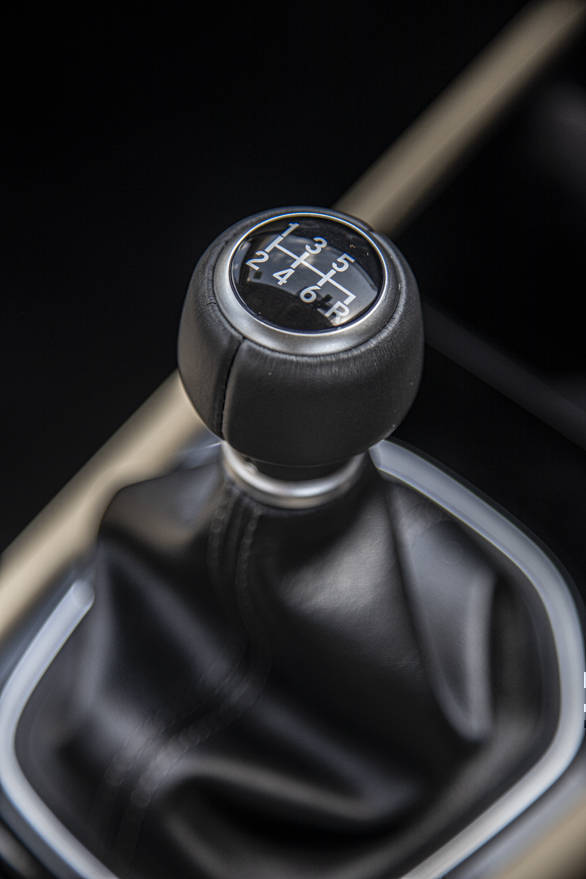
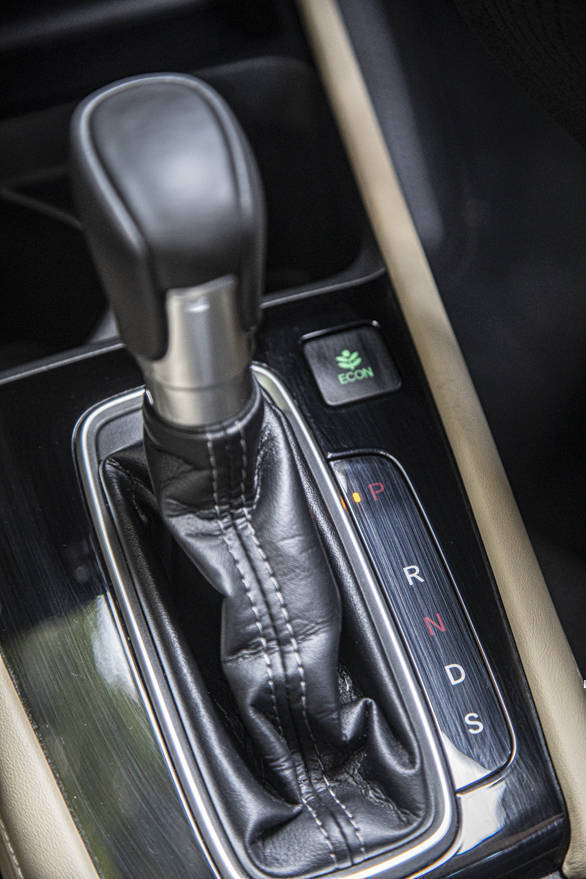
While the chassis is about 4.3kg lighter, the engine has gained a bit of weight with the DOHC construction and the car has become heavier with the additional safety features, but Honda has compensated for that with the tuning. The engine has a linear power build-up, is tuned for a smooth low-end performance than before and has a strong punch between 3,000-6,000rpm ? it even sounds good in that zone. But both the gearboxes have a very different character and interact differently with the engine. Cruising at 100kmph on the highway needs about 1,800rpm with the CVT, but with manual, the engine needs 3,000 revs. Unsurprisingly then, the petrol CVT offers better highway economy (tested, see spec box) than the petrol manual (it reflects in the claimed figures too).
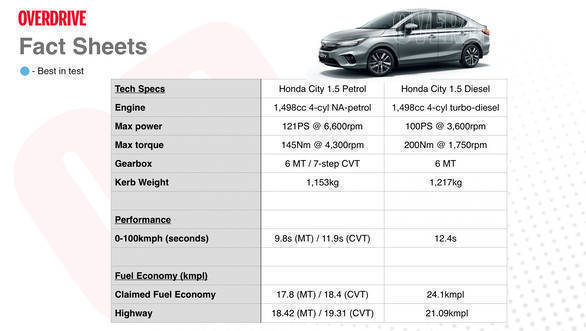
The 1.5-litre i-DTEC 4-cylinder diesel engine is carried over from the previous car, but it now has the assistance of a Diesel Particulate Filter (DPF) and NOx Storage Catalyst (NSC) for BSVI compliant emissions. Interestingly, the engine speed hasn't been strangled to achieve the emissions and at the same time, there is no need of AdBlue or Urea injection ? so that is some clever engineering on Honda's part and one thing less to worry about for the owner.
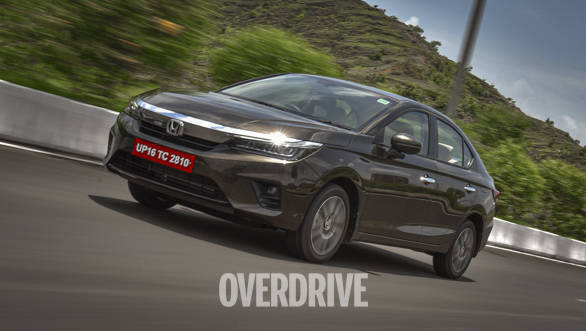
The 6-speed manual on the diesel is just as slick and effortless as in the petrol. The reverse gear has been changed from the constant mesh type to the selective sliding type for lesser jerks and easier operation. The noise insulation for the powertrain has been improved by a fair margin too and you will only hear the diesel clatter beyond 3,000rpm. At slow speeds, the diesel City feels so refined now that the only thing telling you its fuel type are the pulsations in the clutch pedal.
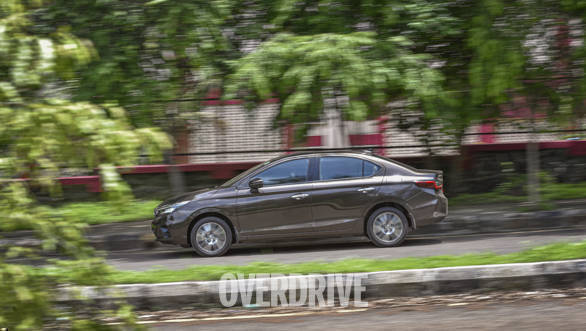
While the suspension mounting points are similar to the outgoing car, their components have been redesigned for better endurance and up to 50 per cent less friction. The real-world gains come in the form of a silent suspension operation even on poor road surfaces. How it ages, remains to be seen ? but the ride feels more premium than what we have seen in the segment so far. The suspension tuning is still on the softer side, but the dynamics are better controlled. The ride is supple and hitting undulations even at highway speeds doesn't unsettle the car. The top-spec City still rides on skinny 185/55-R16 tyres but the floaty feel beyond 120kmph that we complained about with the previous City has been ironed out in the new one.
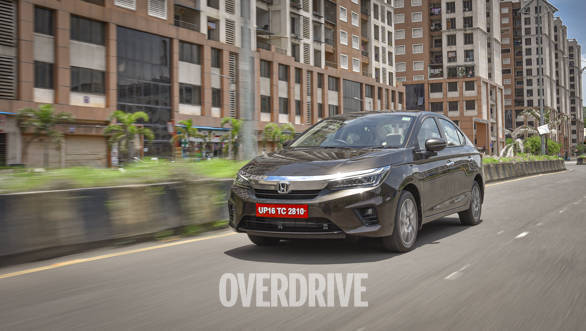
A precise, well-weighted steering setup that the new City benefits from, certainly has a big role to play in imparting confidence. It is complemented by sharp and progressive brakes. While the handling dynamics are now one of the best in the category, I would recommend fatter and gripper rubber if you are a driving enthusiast. But for the urban commuter the stock options from Bridgestone or Goodyear that ship with the car, are more than capable.
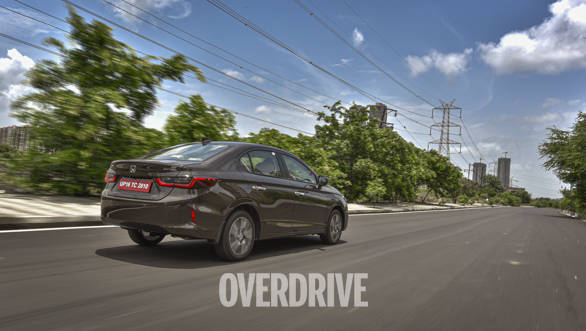
The handling characteristics of all the three variants are very closely matched, but the diesel engine runs out of breath far earlier than the petrol ? so if I was choosing I would go with the petrol manual. Do take a look at the spec sheet to see how the three cars fared in our initial tests. We also managed to squeeze in a highway fuel economy test to add perspective, but the city and overall economy figures will come later with a road test.
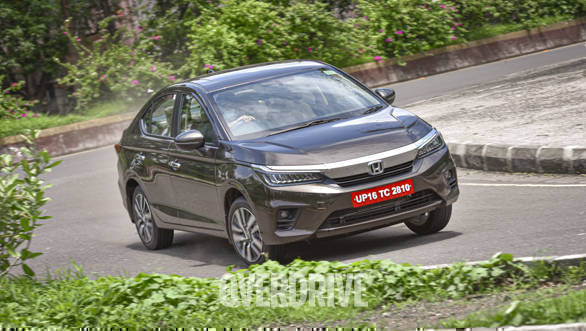
Verdict
Having driven the updated Rapid and Verna in the same week as the City, it isn't hard to see that the new City feels like a generation change over the current segment dwellers. The infotainment system leaves me wanting for a better user interface since it is a large contributor to the feel-good factor. But apart from that, I don't see any flaws worth highlighting in the car. The new City is perfectly aligned with Honda's strategy of restoring the premium brand image and it achieves that quite well with its plush cabin, superior ride and an exciting new powertrain that reminds me of the original and tickles the enthusiast in me. In a nutshell, then, the new City has followed in the tradition of its predecessors of setting a new benchmark for the segment.
Photography: Anis Shaikh
Starts Rs 10.9 Lakhs
1497cc
Manual
100
145
17.8 Kmpl
Starts Rs 9.29 Lakhs
1496cc
Automatic
107
140
17.8 Kmpl
